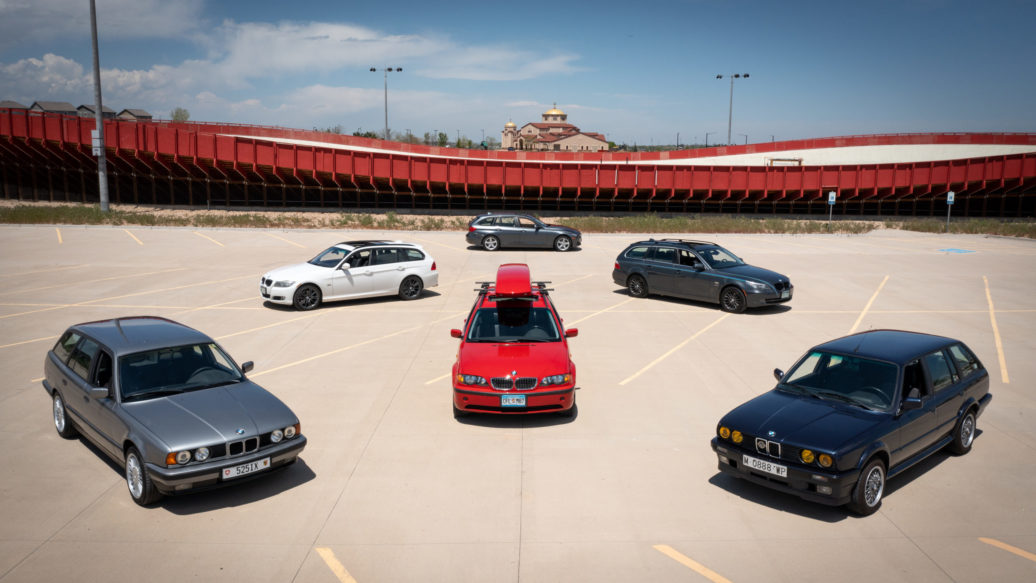Sometimes, as we tread our way through the infinite layers of time and space, the stars align, worlds collide, and an intersection of extremely rare happenstance takes place. Such a collision occurred in my universe recently, but it was only part fate; I just willed the rest. The collision (a figurative one, of course) was not one of worlds, but one of wagons—BMW wagons. BMW all-wheel-drive wagons! Every single generation of BMW all-wheel-drive wagon except for the G21 3 Series wagon, which we are not getting in the U.S. market.
The fate part occurred when a 1989 E30 325iX Touring that I used to own returned to Colorado, which was followed by a visit from a 1992 E34 525iX Touring that a good friend imported from Europe. I willed the remaining generations of BMW all-wheel-drive wagons through my network of wagon-loving friends. There were no E36 or E39 all-wheel-drive wagons, so here’s the lineup:
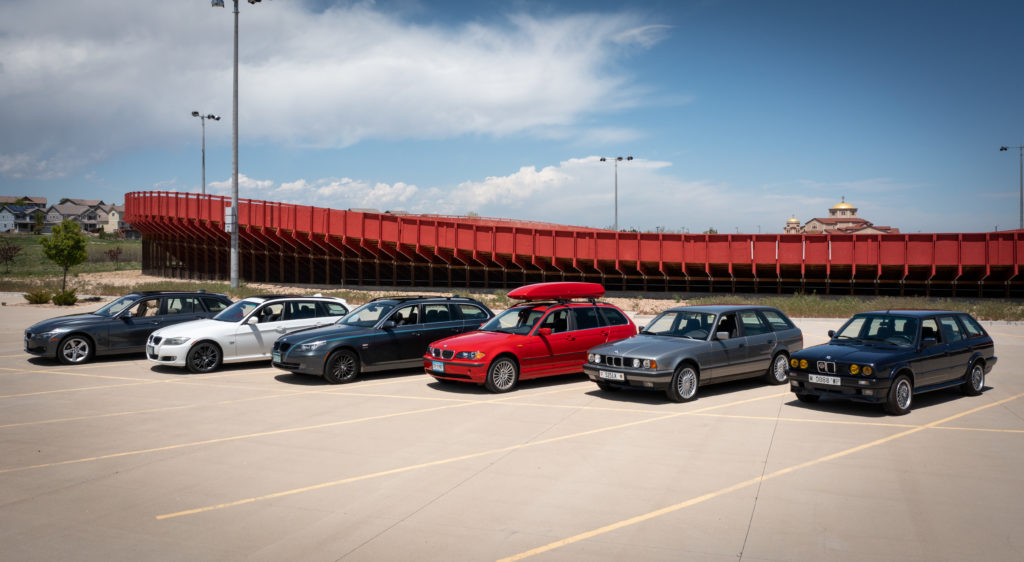
The generations are lined up from oldest to newest, left to right.
1989 E30 325iX Touring
1992 E34 525iX Touring
2002 E46 325xi Sport Wagon
2010 E61 535i xDrive Sport Wagon
2011 E91 328i xDrive Sport Wagon
2014 F31 328d xDrive Sport Wagon
The genesis of the BMW all-wheel-drive wagon was the E30 Touring. It was born when BMW engineer Max Reisbock hand-built one out of a wrecked 323i in his garage. Rumor has that it he built the long-roof E30 so that he could bring his dog along with him and still have use of the back seat.
Reisbock’s work was so good that BMW soon put the car into production, with only a few minor changes. At that time, the newly developed all-wheel-drive platform for the 325iX was a perfect fit for the Touring; now your dog could accompany you to the ski hill or the snowy trailhead.
None of the E30 Tourings were offered in the United States, and compared to total production volume, all-wheel-drive versions were rare even in the car’s home markets. As wagons have a tendency to do, most were used and not preserved, which was made worse by the wintery climates that all-wheel-drive Tourings tended to be found in.

The E30 Touring’s three-box design is quintessential BMW.
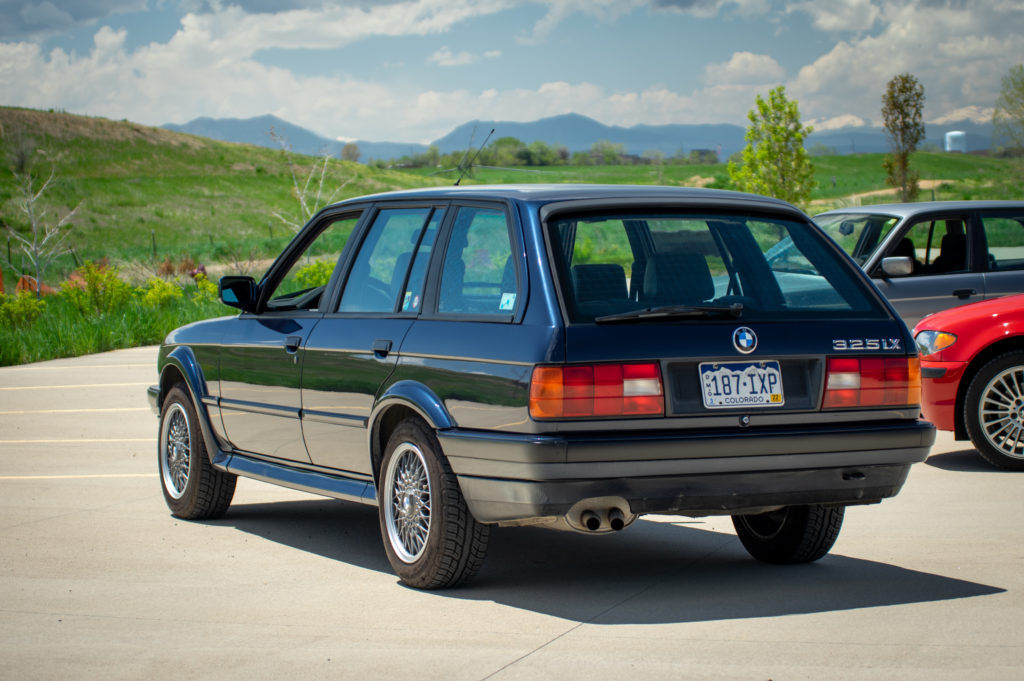
Those factors make this 1989 325iX Touring all the more exceptional, because thanks to its being a Spanish-market car, its Royal Blue sheet metal was spared from Old Man Winter’s rusty touch.
The iconic lines of the boxy E30 have always been the definitive form of a BMW for me, thanks to my coming of age when the E30 was still new. Stretching a sedan it into a wagon can be a design challenge, the end result of which isn’t always better for it, but Reisbock executed the task with the E30 perfectly. Its lines are tidy and balanced without awkward proportions. Add the taller all-wheel-drive ride height with iX fender flares, and it looks more tactical than a rear-wheel-drive E30 Touring.
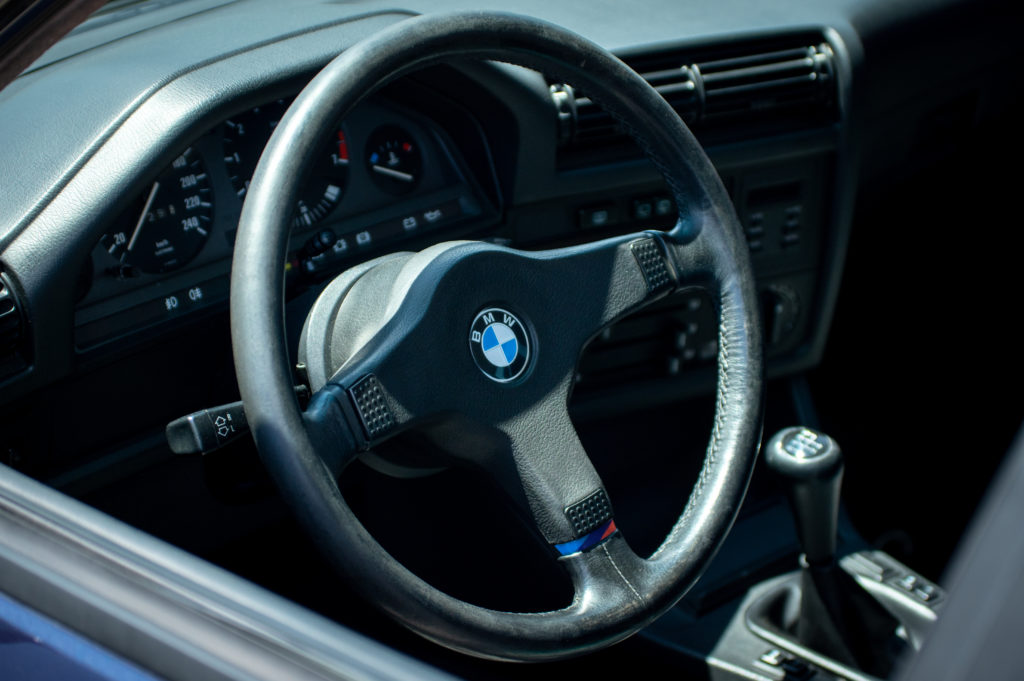
An M Tech I steering wheel and cloth heated seats make the up E30 325iX Touring’s interior.
Back when I owned it, I added some bling from my secret E30 parts stash, the most notable being glass “Frenchie” yellow headlights and fifteen-inch iX basketweave wheels finished in Nogaro Grey. Inside, the anthracite cloth interior is a wonderful place to be, with heated comfort seats and an M Tech I steering wheel. Upright windows and small pillars give the E30 360-degree watch-tower-like visibility, which is improved in the Touring by having the C-pillars farther astern.
The rear hatch of the E30 is small, however, which is made worse by the improvised design of the taillights not being incorporated into the lift gate. Rust in the hatch can be in issue as well.
The 325iX Touring is definitely not the fastest E30 of the lot, either, but that changes dramatically once the snow falls. Despite being nose-heavy and heavier overall than a rear-wheel drive E30, the 325iX Touring gives up none of the God’s Chariot qualities that define the E30.
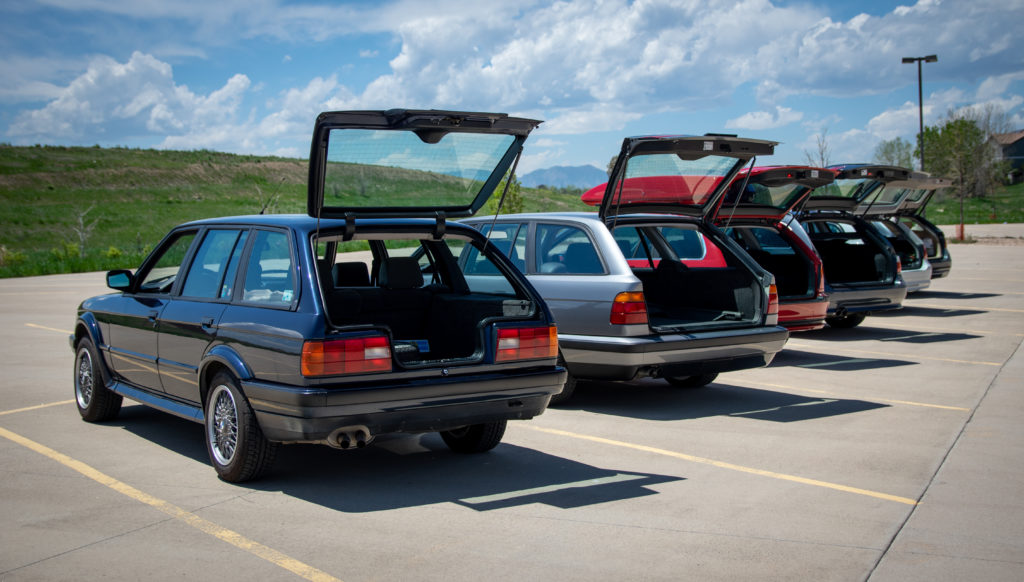
The improvised rear hatch of the E30 shrinks the opening.
When the E34 5 Series was developed, BMW planned a Touring version from the start, even offering one for the U.S. market, although we didn’t get the 525iX Touring. As a wagon, the E34 didn’t have any of the afterthought issues of the E30; the hatch door was full-size and opened to reveal a cavernous cargo area. The lines of the E34 in wagon form are not as elegant as the E30, but as a former M5 Touring owner, I’ve always embraced its larger and frumpier proportions. The M5 Touring drove the coolness factor off the charts, but the 525ix Touring is way more practical—and nearly as rare, with only a fraction of total E34 production being made into all-wheel-drive long-roofs. The 525ix Touring was also the only E34 with the more nimble rack-and-pinion steering system, thanks to its all-wheel-drive front subframe.
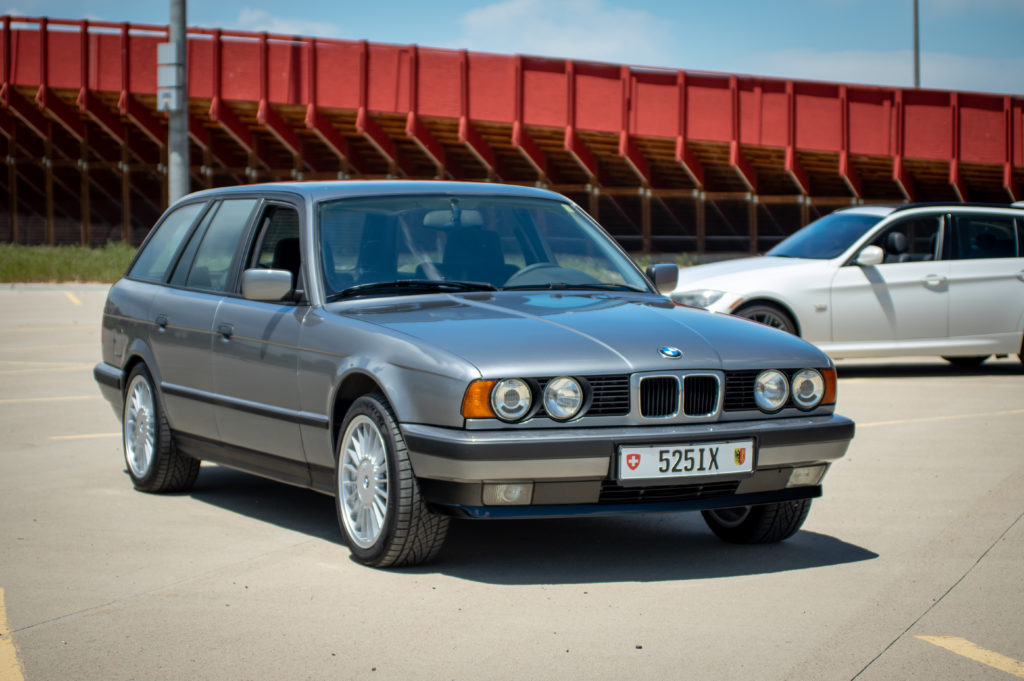
In a word, the E34 Touring is cool. It’s also rare in 525ix form.
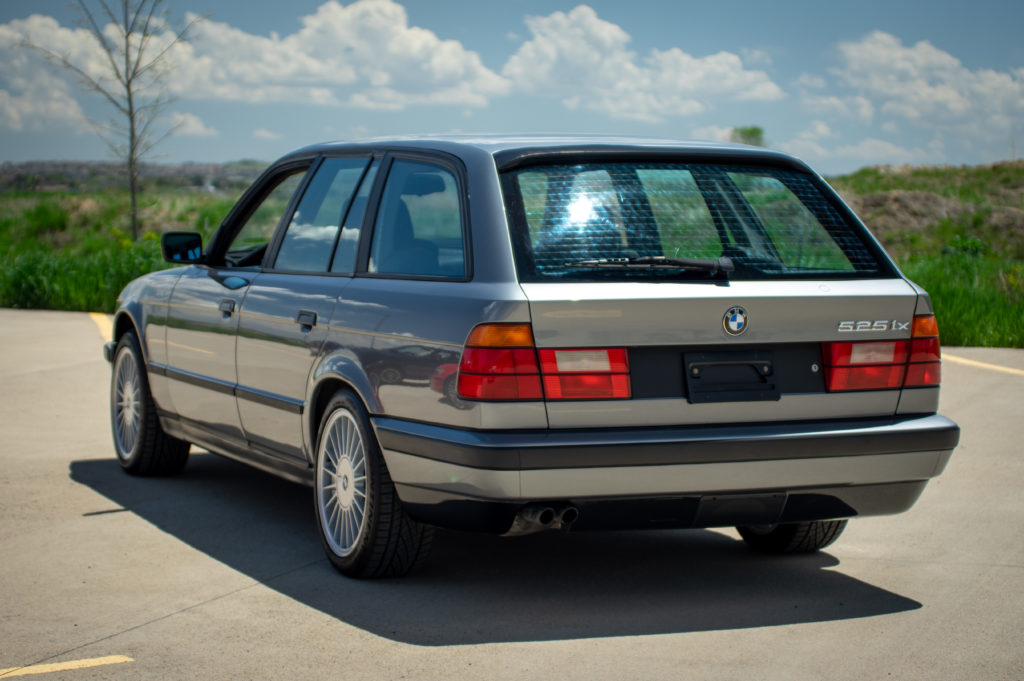
Our 1992 525ix Touring was a Swiss-market car that found its way to U.S. via the Netherlands. It’s finished in Granite Silver, an excellent E34 color, which is accentuated by anthracite cloth manual sport seats. My friend improved it further with an M Tech II steering wheel and seventeen-inch Alpina replica wheels. The Euro headlights, sunroof delete, and simple on-board computer are other options that set it apart from a regular U.S.-market E34 Touring.
Underneath, it shows a few signs of winter’s touch—really more of a gentle caress, and nothing terminal. The M50 engine is well suited to the E34 despite the extra weight and mechanical drag of the all-wheel-drive system. I haven’t had a chance to drive the 525ix Touring in the snow, but I have driven a few rear-wheel-drive E34s in heavy snow, and they were exceptional thanks to the long wheelbase and limited-slip differential. With its similar architecture to the E30 iX, I can only imagine that the E34 525ix Touring claws through powder like a snow leopard.
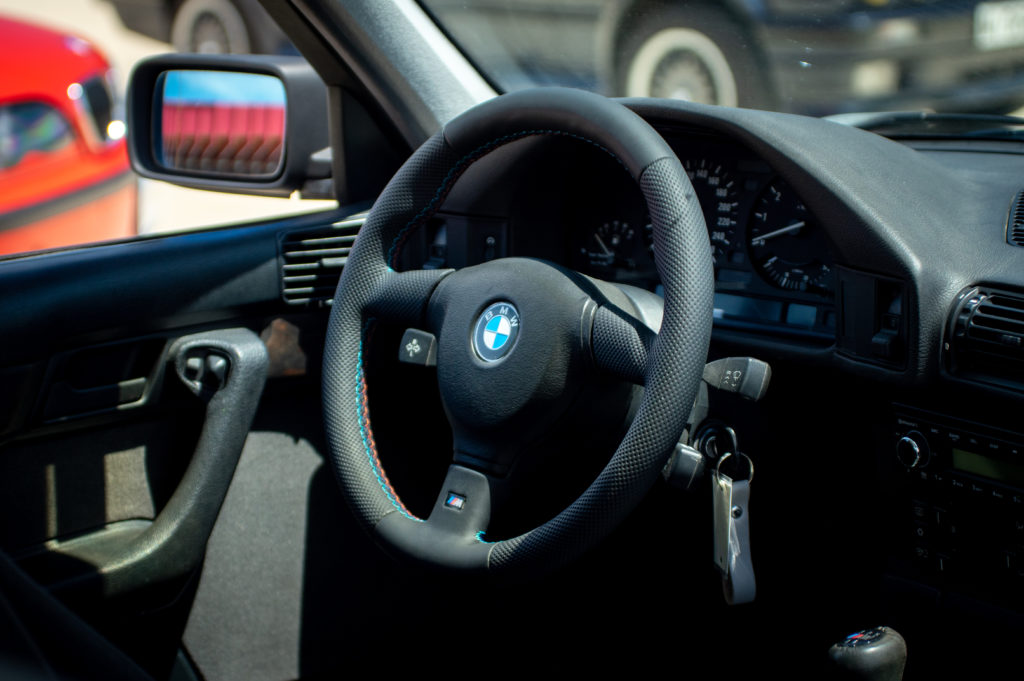
Another M Tech (II) steering wheel and cloth (sport) seats.
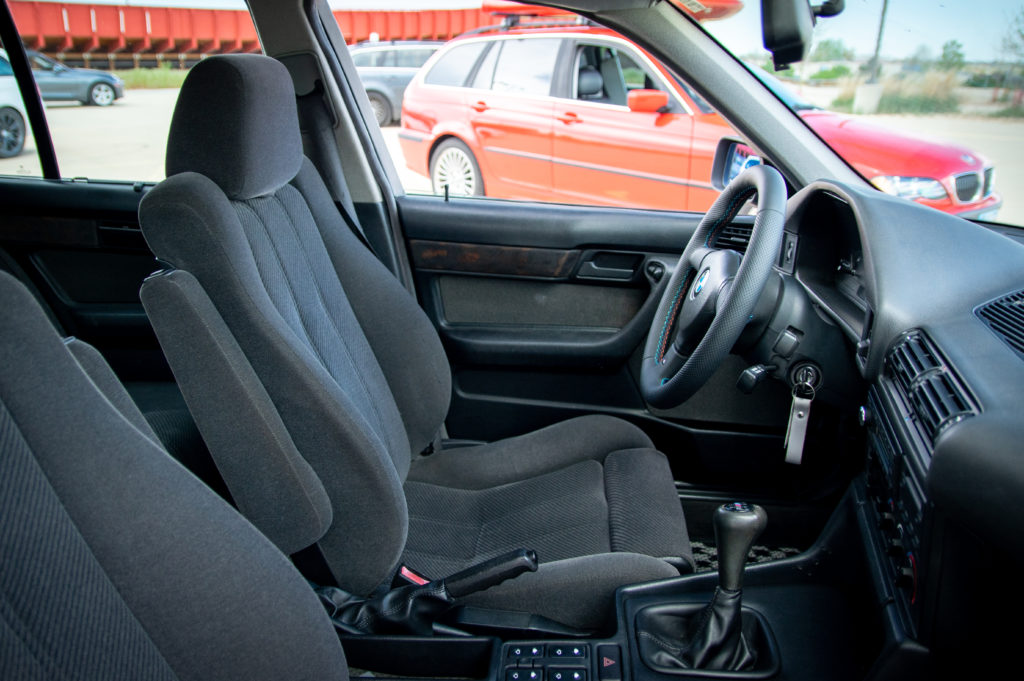
My 2002 325xi Sport Wagon makes a ten-year leap forward into the future, and compared to the E30 and the E34, it feels a decade newer. But in doing so, it crucially doesn’t forsake its traditional Ultimate Driving Machine roots. In fact, that’s what makes the E46 so good: It’s a perfect intersection of classic BMW goodness with modern refinements—if a twenty-year-old car can be modern.
For the E46 325xi, BMW put the X before the I, and with that, the all-wheel-drive system changed from the viscous-coupling limited-slip differentials of the iX to open differentials and a transfer case retaining the rear-wheel bias. The system is lighter and more resilient, but also dependent on Dynamic Stability Control (DSC) to control excessive wheelspin by applying the brake to the offending wheel. I tested this difference, rather embarrassingly and much to the chagrin of my wife, in front of a large audience on the road leading to a snowshoe trailhead last winter. With DSC off and half of the wheels on ice, I goosed it for a heroic slide, but where my old limited-slip E30 would have held the slide, the E46 just went around into the ditch. The word idiot reverberated through the crowd, and deservedly so.
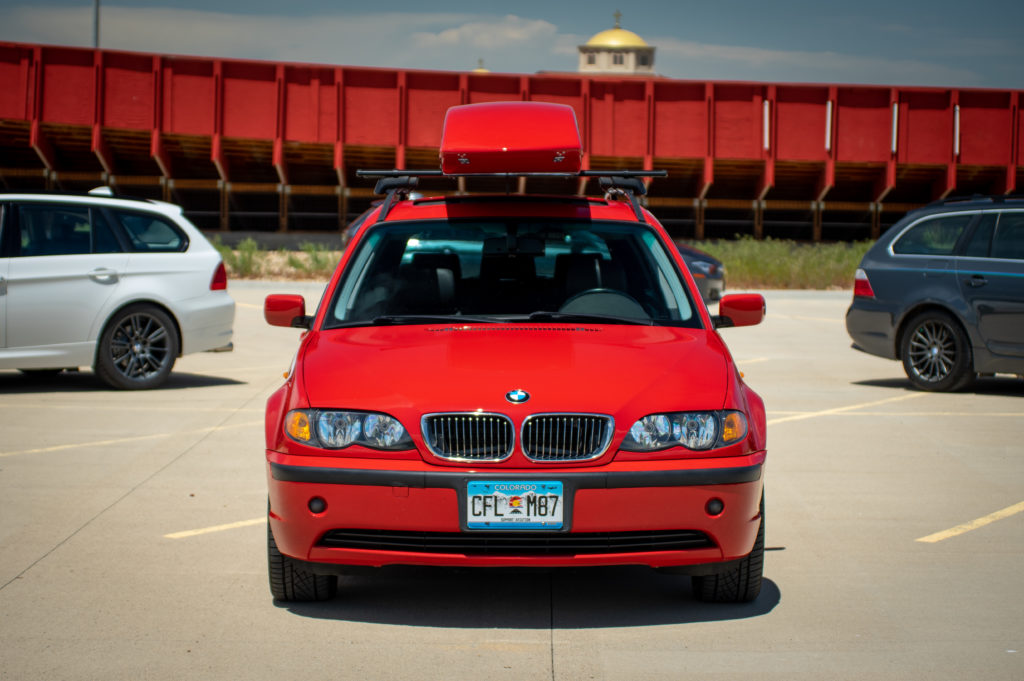
The E46 325Xi is the perfect intersection of old and new.
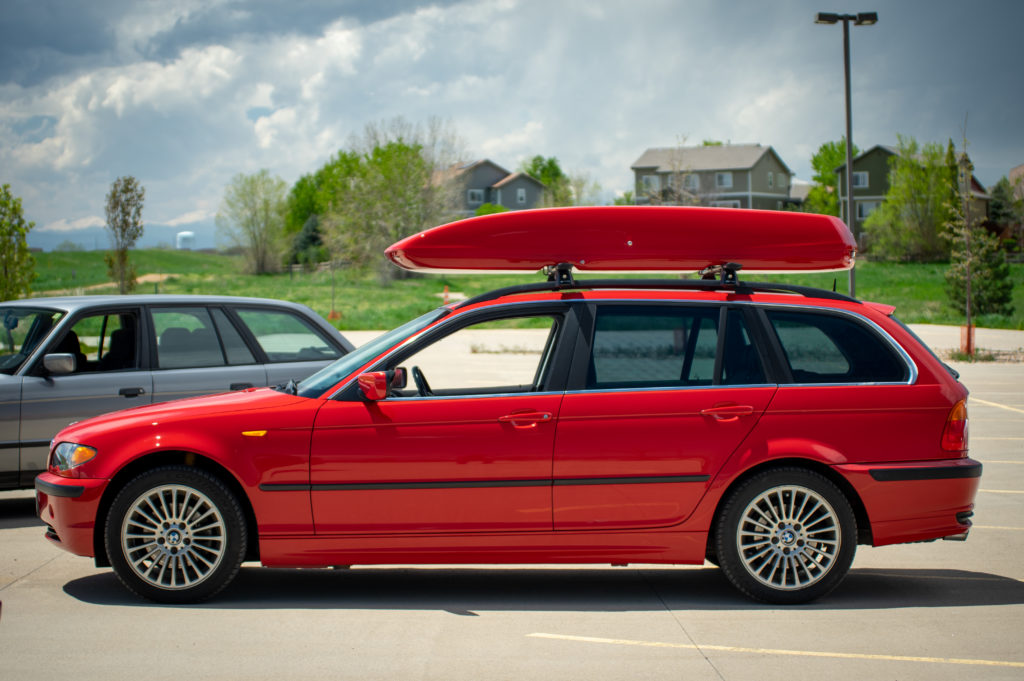
My Japanrot (red) 325xi Sport Wagon came into my vehicle quiver as a more practical replacement for my old S54-swapped M3 wagon last November. Six months after its initial sorting, my only addition has been a color-matched roof box. The build-spec is perfect: Japanrot over black leather, five-speed manual gearbox, sport package, manual seats, and halogen headlights. It has everything I need and nothing that I don’t. The lines of the E46 in Sport Wagon form are perfect, with no bad angle to be found. Subtle stylization cues in the front spoiler, side skirts, and rear valance add dimension without being over-styled like a modern car.
The inside is simple and uncluttered, with analog buttons that have singular functions. With the added weight of the E46 chassis, the M54B25 engine has a similar powerband as the E30’s M20 block, but the VANOS variable timing livens it up considerably.
Complaints? The E46 was the beginning of the age of failing plastic fiddly bits (window regulars have a finite lifespan, and the sunroof is always a roll of the dice), and the M54 engine is likely to eventually begin consuming excessive oil. But at the end of the day, I love my E46, and I’m proud to have it in the fleet.
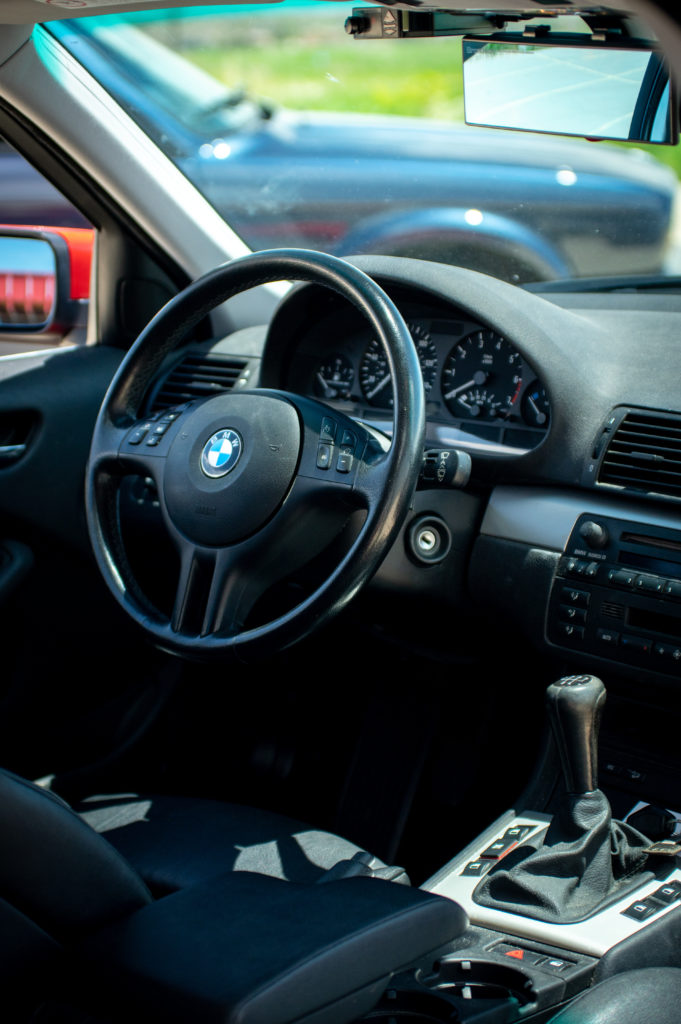
The E46 interior is simple and uncluttered.
The E61 535i xDrive Sport Wagon was a dramatic departure from the common theme of the all-wheel-drive wagon being on the slower end of the model lineup, thanks to the twin-turbocharged N54 engine. Behind the wheel, it feels more potent than its 300-horsepower rating—and that is notable, considering how massive the E61 wagon is, measuring nearly sixteen feet long and weighing roughly 4,000 pounds.
The xDrive all-wheel-drive system is considerably more advanced than the E46’s as well. The xDrive system uses an electronically controlled clutch-pack differential and can split torque front and rear up to 100% if necessary. The improvement in low-grip situations is dramatic, especially in conjunction with a layer of DSC called Dynamic Traction Control (DTC) that allows more wheelspin or a longer leash when needed. From my perspective, the mid-2000s BMWs (E60, E90, etc.) were the dividing line between the last of the classics and the first of the modern BMWs; they aren’t worse for it, either, just different.


Gretchen Troop added the stripes and wheels to the exterior.
Gretchen Troop’s 2010 535i xDrive Sport Wagon is a truly special example, being originally ordered to spec by local motorcycle figurehead Gary Meyers. Meyers specified it in Monaco Blue Metallic over black leather with a proper six-speed manual gearbox and host of other options. Troop happened to be there when he traded it on a Mercedes wagon, and she bought it on the spot. She is a superb photographer, and added her own artistic touches in the form of a milled wooden shift knob, custom stripes, Breyton wheels, and a Buddha statue nestled in the corner of the iDrive screen recess. A heated steering wheel, telescoping headrests, and the panoramic sunroof add opulence, while the early head-up display is just outright cool.
Troop’s E61 wears its 167,000 miles like a much younger car, no doubt due to her care. It is only on its second set of turbos (my wife’s has had four sets with nearly the same mileage). If there is a downside to the E61, it is the maintenance cost, but I’ve never met an E61 owner who said it wasn’t worth it—myself included.
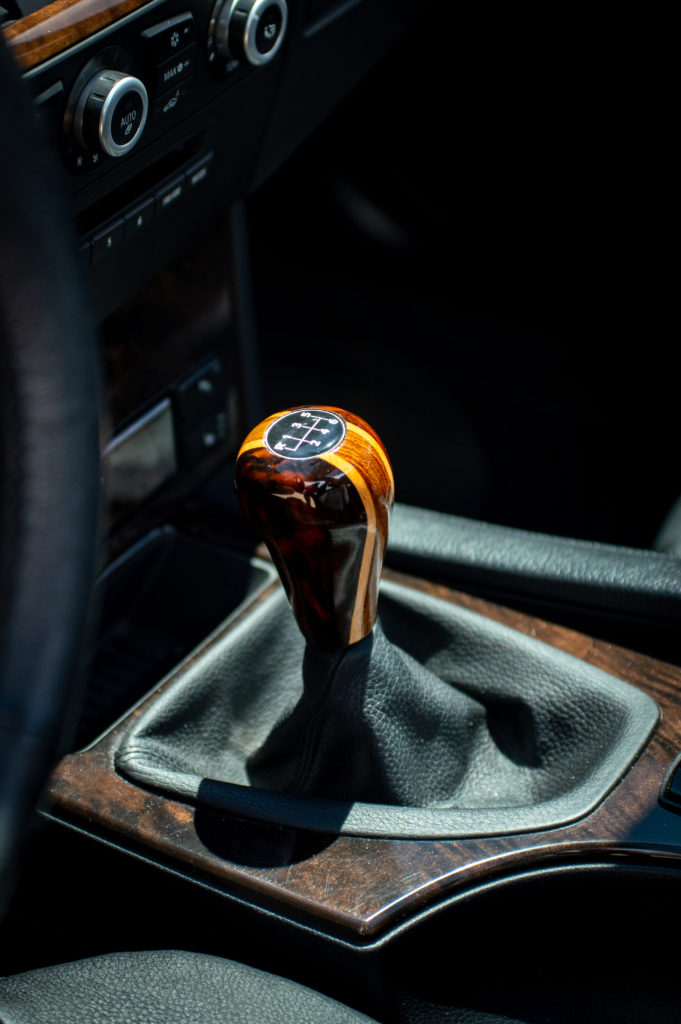
Troop also added a wooden milled shift knob.

The E61’s panoramic sunroof matches its massive proportions. Can you see the Buddha?
BMW continued the all-wheel-drive 3 Series wagon tradition with the E90 generation in the E91 328i xDrive sport wagon. The similarities between the E61 and E91 are many, but the N54 engine never found its way into the E91 wagon. The N52 engine that did was in many ways the engine of choice, offering only 70 fewer horses than its turbocharged cousin, yet with none of the issues that plagued the N54. The N52 was also the last naturally aspirated inline six-cylinder engine offered by BMW before the marked shift to a full turbocharged lineup. The E91 shared the xDrive system, in a lighter platform that closed the power gap over the E61 535i even further. The option list for the 3 Series was expanded as well to include those on up-range models, including the panoramic sunroof and other features that start with the words adaptive, intelligent, and dynamic.
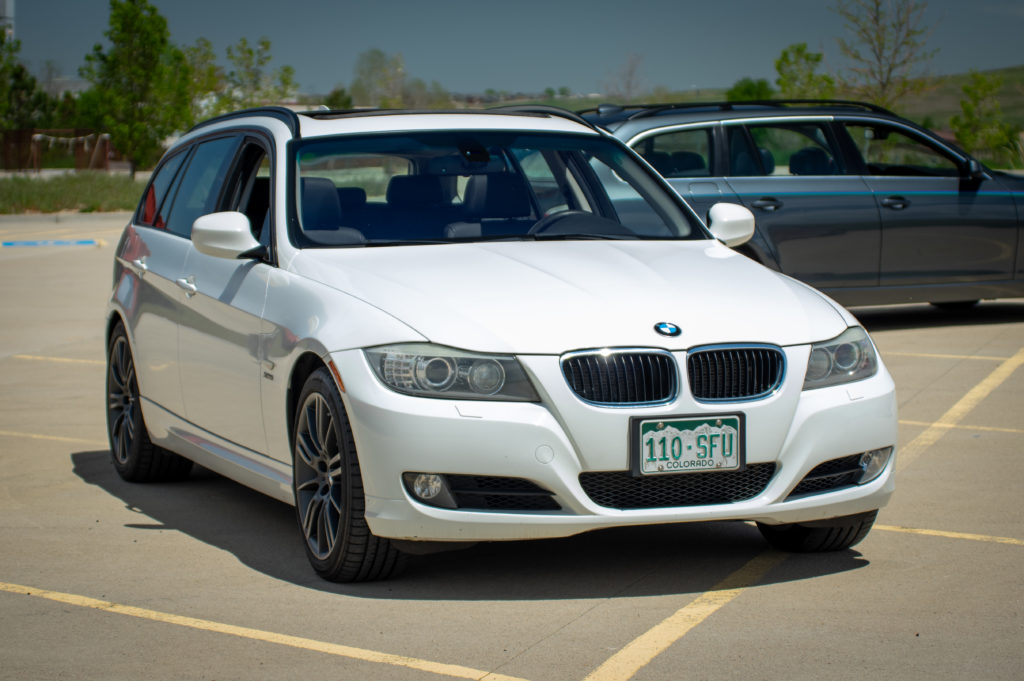
The E91 has more cut lines than the E46, and a better front lower valance.
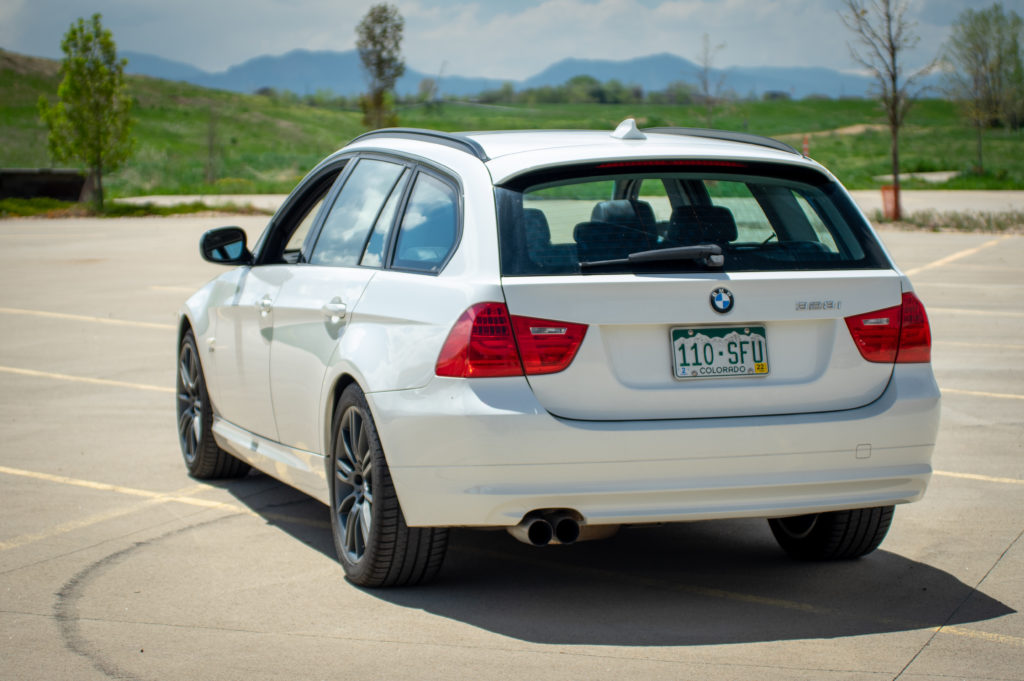
Mark Hutto is our local old-school classic-BMW guru repairer and a man of discerning tastes. He can tame even the most obstreperous Kugelfischer mechanical fuel injection system into a purring kitten with a few hours of work—and a few profanities, of course. The fact that he chose this 2011 328i xDrive a few years ago when it came time for a new daily driver is a statement that speaks to just how good the E91 is. Finished in Alpine White over black leather, the E91 suited Hutto’s no-nonsense nature, having the sport package, a six-speed automatic gearbox, and an iDrive delete.
Hutto added a perforated leather M Sport wheel with paddle-shifters and refinished the eighteen-inch Style 193 wheels in dark gray. The E91’s ZF six-speed gearbox will smoothly select whatever gear you desire, before you even know you desire it, and then it will hold it to redline if needed. It really is that good—and a perfect fit for poor conditions when coupled with xDrive.
The downside of the E91 is more plastic fiddly bits (retractable cup-holders come to mind), more expensive components (although they do tend to last longer than equivalent E46 parts), and the increased prevalence of “lifetime” fluids, which dutifully last the lifetime of the fluid more than the component they are intended to lubricate.
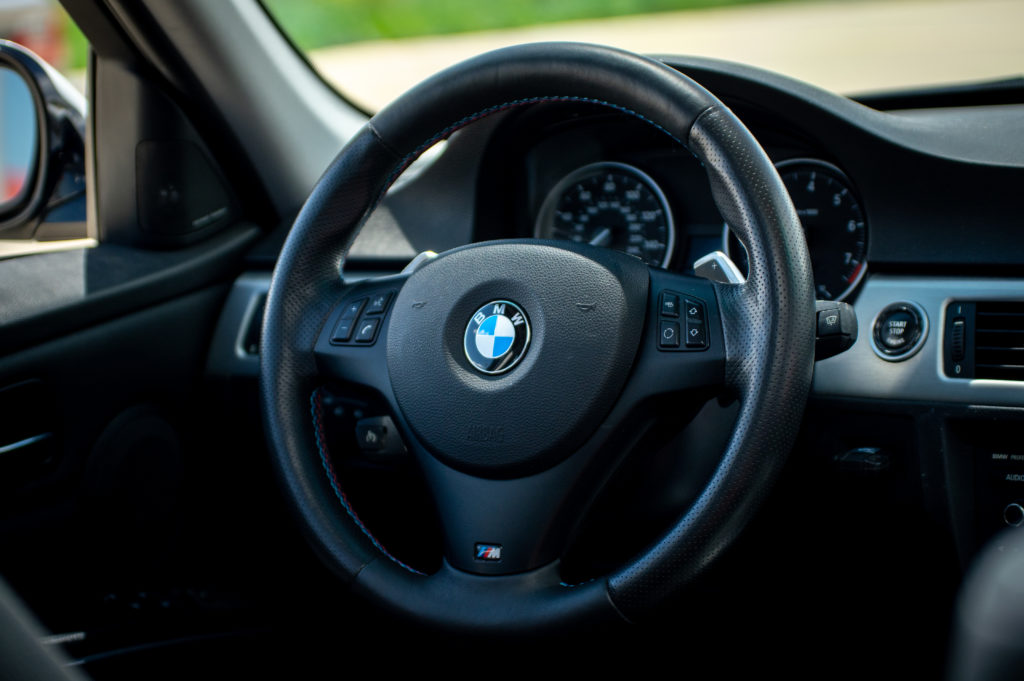
Mark Hutto added the M Sport steering wheel with paddle-shifters.
The F31 is the last all-wheel-drive 3 Series wagon that we’ll see in the U.S. market, unless BMW changes its mind and brings us the G21. But it was also a first, with the 328d xDrive being the first diesel 3 Series wagon available on our shores. It’s also the reason my tired fingers can no longer abbreviate xDrive with just an X behind the name, because a 328dx has a certain Honda Civic vibe. At 180 horsepower, the 328d xDrive has 60 fewer horses than the petrol 328i, but the oil-burner has twenty more pound-feet of torque, and as any diesel driver knows, torque is what you feel. It also gets much better fuel economy, with real-world reports well north of the mid-30- mpg mark to the petrol 328i’s mid-twenties. A telepathic eight-speed ZF replaced the E91’s six-speed, and the xDrive system received minor improvements as well.
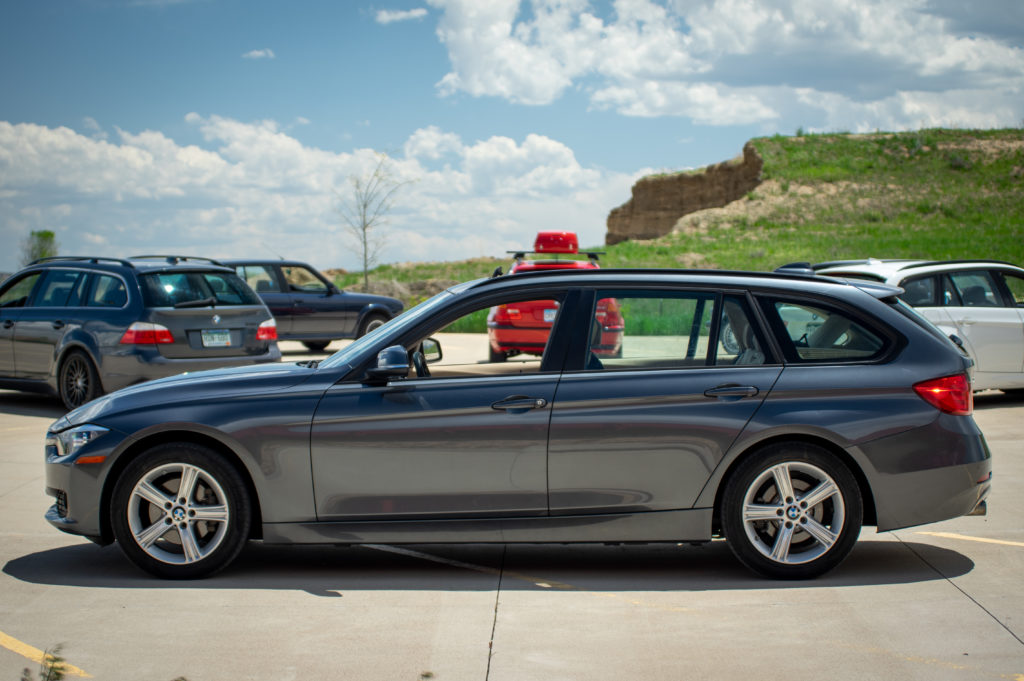
The styling of the F31 is exceptional.

Our 2014 328d xDrive came on loan from another local CCA member who purchased it new and has used it for everything from daily driving duty to the occasional track day. He reports 38.8 mpg over the last ten fill-ups, and well north of 40 mpg on road trips.
Despite sipping diesel fuel, the four-cylinder N47D20O1 engine is quite civilized for an oil-burner. The torque is absolutely fantastic, available almost instantly and with plentiful distribution throughout the power band.
Perhaps it is just me habitually living in the past, but even this seven year old F31 looks, drives, and feels like an exceptionally modern BMW. When the F31 was released, its styling was strikingly good—a notable improvement over the F30 sedan. At the close of its generational run, it hasn’t lost any of that curb appeal. The G20’s design have only cemented the F30’s place, and driven more than few enthusiasts I know to pick up a left-over F30. And now, of course, that’s the only way you can get the newest all-wheel-drive BMW wagon available in the U.S.
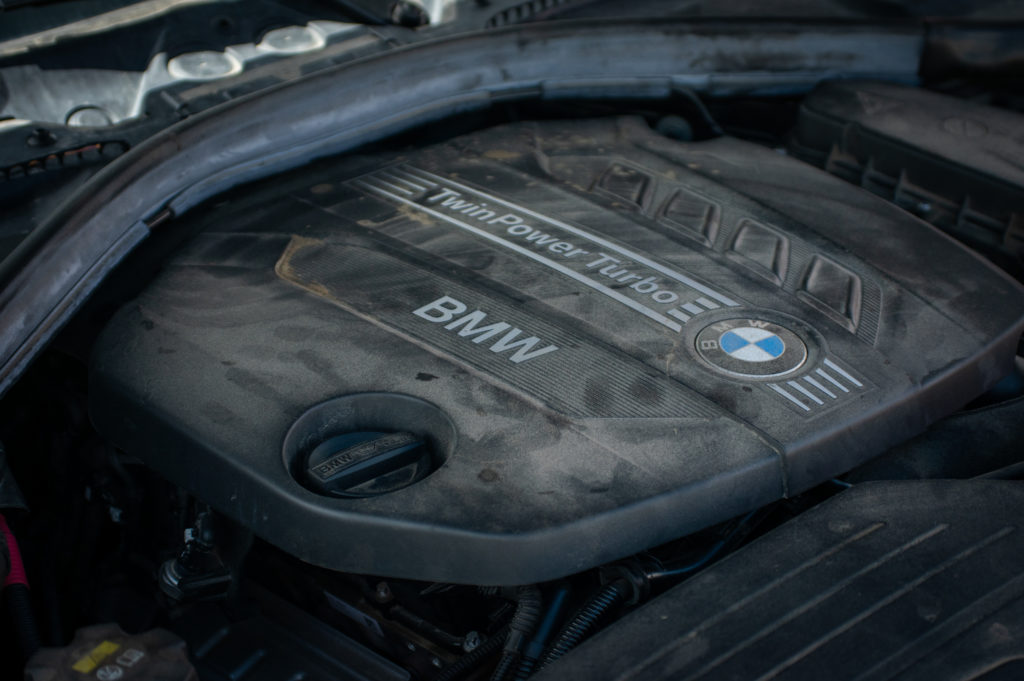
This wagon is used as a wagon is supposed to be, but it still gets 38 mpg!
As quickly as it started, our rare convergence of BMW all-wheel-drive wagons ended. A thunderstorm was looming, and I didn’t dare take too long before tucking them away in the hangar or returning them to their owners lest hail start falling. Witnessing all of the generations lined up together was a lovely way to see the evolution of the BMW all-wheel-drive wagon as it morphed from boxy to flowing to massive to striking: Truth be told, I would be just as happy in any of the other examples as I am with my E46.

I’m sad that despite its styling, we aren’t getting the G21 wagon, because the remainder of its sheet metal is as similarly as striking as the F31. And with the latter, BMW has ended a tradition: For the last two decades, we in the United States have been able to choose an all-wheel-drive wagon, but with the departure of the F31, it’s a choice we no longer have.—Alex McCulloch.
[Photos courtesy Peter Thompson.]

